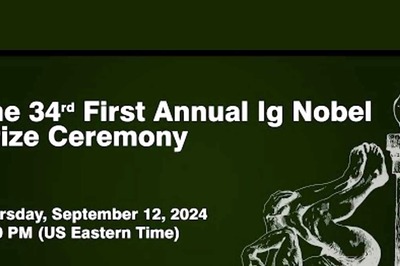
views
New Delhi: A lot of hopes are riding on the proposals already nestling inside that red bahi khata of Finance Minister Nirmala Sitharaman, ready to be unveiled on Saturday.
Like an accomplished magician, the FM is expected to pull out several rabbits from the hat — signifying some sort of tax relief on income for the middle class, a roadmap to boost private investments to kickstart a moribund economy, and measures to boost consumption across India's villages. But Budget-making is no magic and Sitharaman may find it hard to satisfy such wide-ranging expectations while also remaining on the fiscal consolidation path.
India is already struggling with its fiscal deficit target and there is near unanimity among analysts that we would breach the 3.3% mark for 2019-20 by a significant margin. Receipts from corporate tax, Goods and Services Tax (GST) and disinvestments are all expected to fall short of targets, making fiscal consolidation a near impossible task.
And the economy continues to chug along in the slow lane. In the first six months of the current fiscal, the Gross Domestic Product (GDP) growth has been at record lows. It grew at just 4.5% in the second quarter, a six year low, and the Budget is expected to outline measures to boost growth through increased government spending, measures to boost consumption and some long-term reforms.
But will a single Budget be able to tackle these many issues, especially since the government's finances are under considerable strain already? Over the last several months, Sitharaman has announced sector specific sops as well as mega decisions, such as a huge cut in corporate tax rates. But till now, its efforts have had limited impact in lifting the economy out of a slowdown.
For 2019-20, the government itself had estimated full-year GDP growth to slide to 5%. This means the Indian economy will be growing at the slowest pace since the year of the Lehman crisis in 2008-09.
Though at 5% for the full year, the estimate builds in a mild recovery in October 2019-March 2020 period since the growth in the first six months had averaged 4.8%. The 5% estimate shows the extent of the slowdown in the economy within just 12 months since the GDP growth had been measured at 6.8% in 2018-19.
This 5% growth estimate for FY20 is way below the estimate given in the Economic Survey last January (it had projected 7% growth) and also below the estimate with which the Reserve Bank of India (RBI) began the year (the central bank had initially forecast 7.4% growth but has been subsequently lowering growth numbers to reach the 5% mark). One will have to now watch out for how close even this 5% number is to actual growth. In at least two of the last five fiscal years, the advance GDP growth estimate put out by the government before the Budget was lowered further. One economist called the 5% growth number the government’s “first guess”.
What is contributing to the overall slowdown? India’s factories are sitting idle. The Central Statistical Office (CSO) has projected manufacturing growth at just 2% this fiscal against 6.2% in the year-ago period – a decline of over three times.
It is well known that manufacturing has been slowing but the quantum of the slowdown is rather shocking. The RBI policy statement earlier this month said that capacity utilisation fell to 68.9% in the July-September quarter this fiscal from 73.6% in the immediately preceding quarter. In other words, nearly a third of India’s factory capacity was sitting idle in the September quarter, up from nearly a fourth in the April-June period as consumption slowdown resulted in lower use of installed capacities across plants.
The construction sector is the next big laggard, with growth projected to settle at just 3.2% this fiscal against 8.7% last fiscal, a decline of more than two times. And the agriculture sector is not much better, with growth expected to be 2.8%, nearly the same as the previous fiscal.
In this scenario, economists have been urging the government to keep aside fiscal consolidation and instead push ahead with growth measures.
Madan Sabnavis, Chief Economist at CARE Ratings, said, "The only effective way to link with economic push is to have a targeted deficit higher by 0.5% of GDP and linked with capex."
In simple terms, this means the government could consider stepping up spending even at the risk of a higher fiscal deficit.
Here are some areas the Budget may focus on:
** IT Relief: It is widely expected that the FM will announce some relief in income tax rates or slabs to put more money in the hands of the salaried middle class which will, in turn, boost consumption. An analysis by the State Bank of India (SBI) says just 4% of Indians pay income tax but these people account for 41% of overall private consumption expenditure.
** Infrastructure and rural income: The FM would do well to focus on areas that have the potential to generate employment, improve long-term efficiency of the economy, and support consumption. Populist spending (such as income tax relief) will enhance money in the hands of consumers and spur growth, but this is a short-term solution. Spending on infrastructure would be a more long term solution to boost the economy.
** Jobs: Unless policy-makers focus on job creation on a large scale, the Budget is unlikely to have any major impact on the aam aadmi. The Federation of Indian Chambers of Commerce and Industry (FICCI) has said in its Budget recommendations that direct tax incentives should be announced for businesses generating employment and that there should be mass entrepreneurship programmes for rural India.

















Comments
0 comment